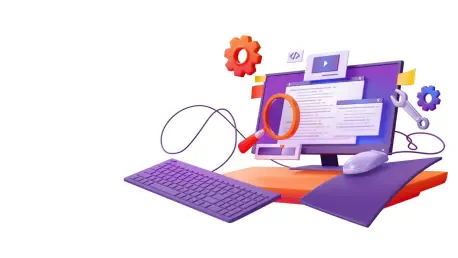In the ever-evolving world of telecommunications, Rakuten Symphony has unveiled a significant upgrade to its Site Management tool, incorporating advanced AI functionalities. Vladislav Zaimov, an esteemed expert in telecommunications and risk management, sheds light on how these enhancements are revolutionizing site management across various sectors.
Can you provide an overview of Rakuten Symphony’s Site Management tool and its main purpose?
Rakuten Symphony’s Site Management tool was initially designed to streamline telecom deployments by digitizing processes and incorporating machine learning. Its primary purpose is to simplify and enhance the efficiency of these operations. With the recent upgrade to version 2.0, the tool now extends beyond telecom, offering valuable capabilities for a range of infrastructure projects.
How does the AI enhancement in Version 2.0 differ from the original version of Rakuten’s Site Management tool?
The original version focused on digitizing workflows and included some machine learning features to ease telecom deployment challenges. However, version 2.0 steps it up with robust AI enhancements, automating tasks such as site audits with image analysis and improving design efficiency. These advancements go beyond the basic digital processes, providing more intelligent and comprehensive management capabilities.
What are the specific AI features integrated into the Site Management tool 2.0?
Version 2.0 boasts several AI-driven features. It automates site audits by using AI for image analysis, checks the quality of completed work, and provides remediation recommendations if needed. Additionally, it facilitates better design and collaboration through digitized diagrams, performs feasibility analysis using geographic and regulatory data, and identifies potential project delays before they occur.
What benefits do the new AI capabilities bring to the site management process?
The enhanced AI capabilities streamline the site management process by reducing manual oversight, improving efficiency, and mitigating risks. Automating tasks like site audits and feasibility analysis not only speeds up project timelines but also ensures higher accuracy and quality, ultimately leading to cost and resource savings.
Could you elaborate on how the AI image analysis works in automating site audits?
AI image analysis in the tool automates audits by evaluating visual data from sites. It can assess whether the quality of work meets set standards and instantly suggest any necessary improvements. This automation replaces the time-consuming manual checks, ensuring faster and more reliable audits.
What types of projects can the Site Management 2.0 tool handle beyond telecom deployments?
Beyond traditional telecom projects, the upgraded tool can handle a multitude of real estate management tasks. This includes managing deployments of satellite ground stations, EV charging ports, interior data center designs, and even utility station construction. Its versatility makes it applicable across various infrastructure needs.
How does Rakuten Symphony’s partnership with AT&T benefit the development and application of the Site Management tool?
AT&T’s collaboration has been instrumental as a use case for Rakuten’s tool, offering vital insights and feedback that propel the tool’s development. Their involvement has not only validated the tool’s effectiveness but has also expanded its application to include fiber deployments, demonstrating its growing utility.
What specific improvements has AT&T seen from using Rakuten’s Site Management tool?
AT&T saw significant consolidation by retiring around 100 internal tools previously used for project management, thanks to the Site Management tool. This consolidation streamlines processes and enhances productivity across its teams, highlighting the tool’s substantial impact on operational efficiency.
How widespread is AT&T’s use of the tool across its teams?
The tool is quite extensively utilized, with 10,000 team members and contractors incorporating it into their workflows. It underpins both their wireless and fiber deployment strategies, underscoring its effectiveness and broad adoption within the company.
Could you share more about the potential applications for the Site Management tool in real estate management?
In real estate management, the tool has potential applications such as optimizing property layouts, managing construction timelines, and coordinating various infrastructural elements. Its comprehensive analytical capabilities could transform the way real estate projects are executed, improving precision and outcomes.
Beyond AT&T, what other companies or industries are currently using or interested in using the tool?
Apart from AT&T, companies like Nokia are leveraging the tool globally for managed services in site deployment. This interest extends across industries that require complex infrastructure management, indicating a broader market potential beyond traditional telecom companies.
Can you discuss the planned features for the future 3.0 version of the Site Management tool?
For the upcoming 3.0 version, Rakuten is exploring new AI-based features aimed at provisioning, orchestrating, and optimizing processes further. These features will build on the current capabilities, offering even more sophisticated management tools for diverse applications.
What is the “harvesting and reusing of assets” feature that you mentioned working on?
The harvesting and reusing of assets feature will identify underutilized assets in a network and suggest nearby sites where they can be better employed. This capability aims to maximize resource efficiency and reduce wastage, offering strategic insights for asset management.
How is Rakuten Symphony planning to promote the Site Management tool 2.0 to prospective customers?
Promotion of the tool is likely focused on showcasing real-world use cases like AT&T, emphasizing its adaptability and efficiency across various projects. By highlighting the tool’s proven benefits and innovative AI features, Rakuten will aim to capture interest from diverse sectors.
What role will AI play in future versions of Rakuten Symphony’s tools?
AI will continue to be at the forefront, expanding into areas of process automation, predictive analytics, and enhanced decision-making. Future iterations will likely see AI becoming even more integral, driving innovation and creating smarter solutions.
When will Rakuten Symphony’s next iteration, version 3.0, be available?
While there isn’t a set release date for version 3.0, development is underway, with the anticipated features set to significantly enhance the current offering. The excitement surrounding upcoming functionalities is palpable, promising even greater advancements in the near future.
Can you provide insights into Rakuten Symphony’s presence at DTW Ignite in Copenhagen?
Rakuten’s presence at DTW Ignite is part of a strategic effort to showcase its innovations to a global audience. This platform allows Rakuten to connect with industry leaders, share advancements, and forge new partnerships, setting the stage for the broader adoption of its cutting-edge solutions.
What is your forecast for the role of AI in telecommunications?
AI will undoubtedly continue to revolutionize telecommunications by optimizing networks, enhancing customer experiences, and enabling rapid technological changes. Its integration will lead to smarter, more resilient telecommunication infrastructures capable of addressing future demands with agility.









